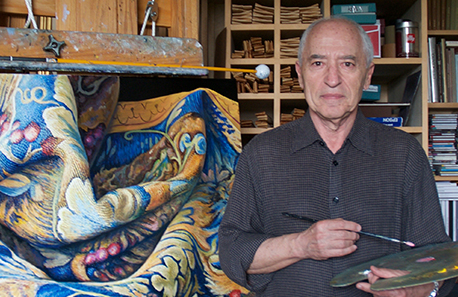Joseph Genova Painter - New York, USA.
How does your connections to Italy influence your art?
Ever since I was a little boy in Italy, art took centre stage in my life. I was attracted to the paintings, murals, and statues that are abundant in churches and palaces.
I began drawing at an early age and continued when my family immigrated to the US. I longed to be an artist ever since I can remember.
Discuss the inspiration you take from the 17th Century artist Michelangelo Caravaggio?
My first exposure to the paintings of Caravaggio was when I was about 10 years old. I was in a public library looking through an art book on the Italian Renaissance. When I turned a page and saw Caravaggio’s “The Calling of Saint Matthew,” I literally froze. I had never seen a painting like that before, with its dramatic theatrical lighting, bold colours and composition. I decide then that I wanted to paint like Caravaggio.
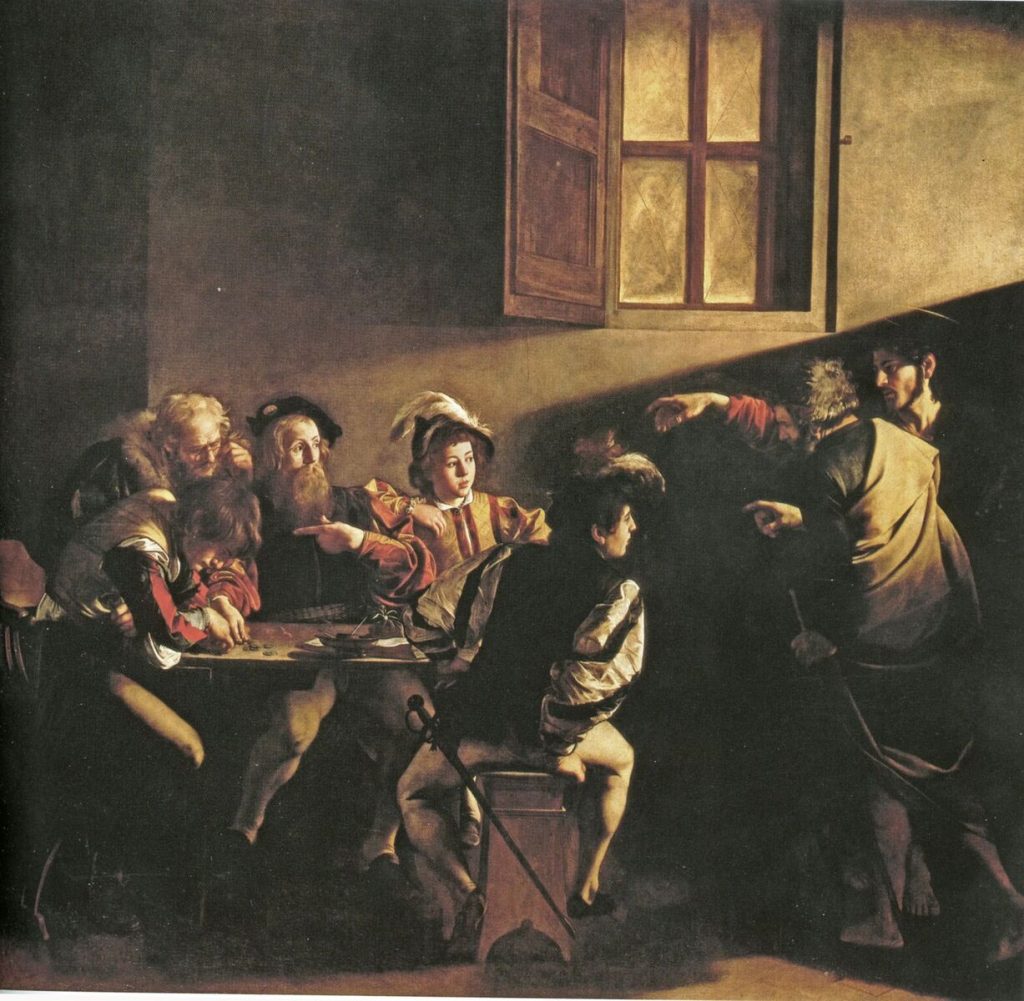
Caravaggio, The Calling of Saint Matthew
Apart from your Italian background how does your current New York life effect your art?
Living in New York has exposed me to all manner and styles of art. If something is new and different, you’ll see it first in New York.
The city gives an artist a holistic perspective, which forces you to compare your art to what’s new and popular in the market place.
You paint fabric, discuss where you source the fabric and what draws you to each piece?
I started painting fabrics about two years ago. Since today’s market is going more and more modern, I wanted to find a way to be more modern while still, remaining representational.
The colour, texture, and pattern of the fabrics is what draws me to each piece. I spend a lot of time arranging a piece of fabric until I get the folds and composition that I want.
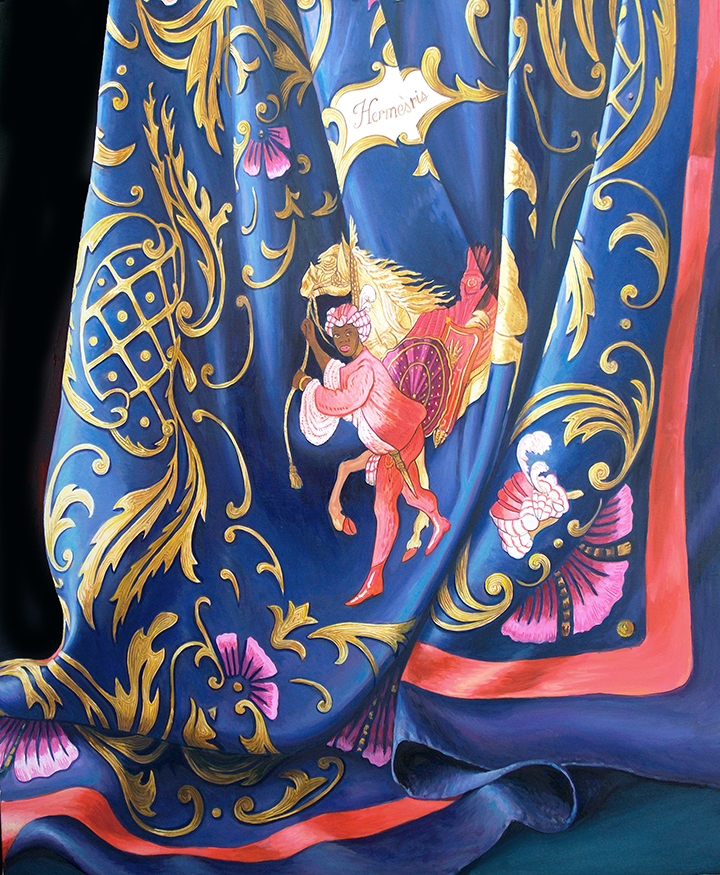
Hermès #1
Take one or two fabric pieces and discuss your interpretation into your paintings.
I was attracted to the beautiful design, colour, and silky texture of one of my wife’s Hermès scarves. In arranging its folds, I tried to emulate the image of water flowing over rocks since that’s what the design reminded me of. The most difficult part of the painting was capturing the texture of the silk.
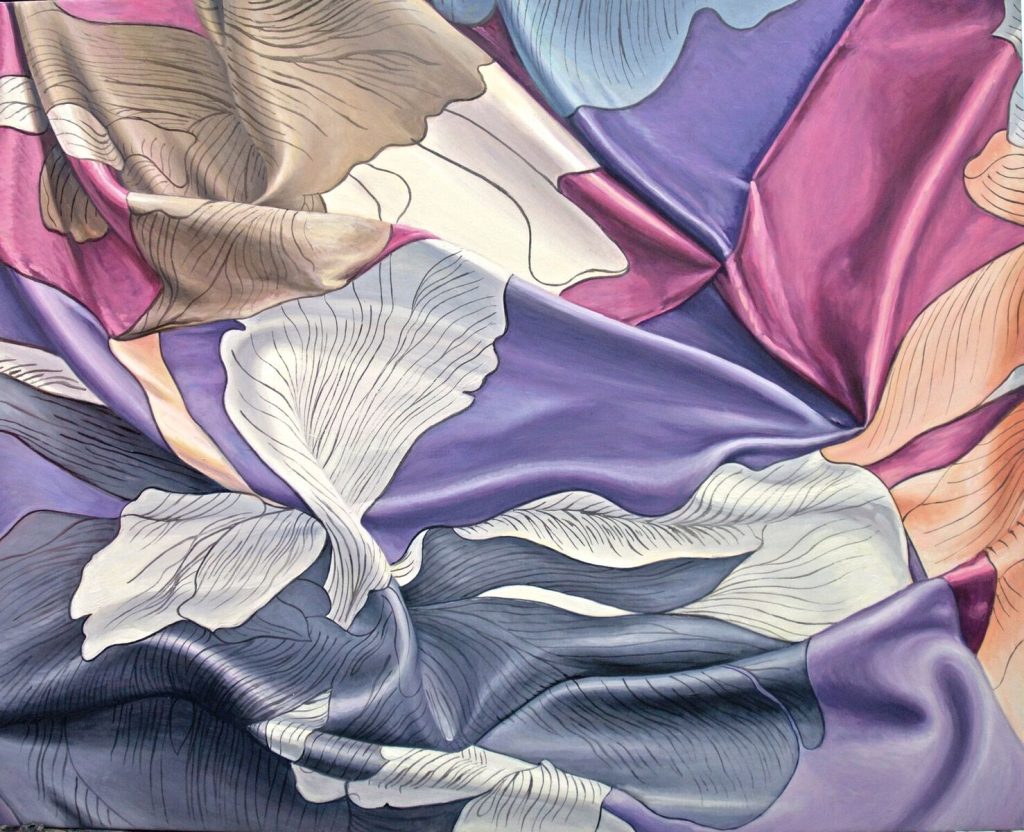
Hermès #3, 24 x30 inches, Oil on canvas
What different techniques come into play when you paint two very different fabrics, e.g. tapestry and silk?
There are certain fabrics that couldn’t be more different. With silk, you need to use a very light touch with your brush to capture its fine texture. I glaze many areas to help with the tonality of the colour.
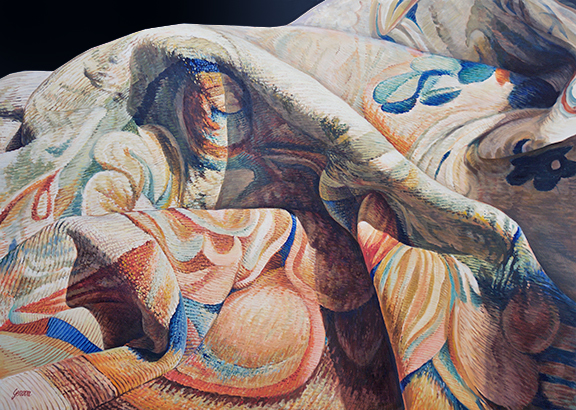
My Tapestry, 27 x 36 inches, Oil on Canvas
In painting a tapestry, I use a different approach. Since the texture is much coarser, I mostly use hog bristle brushes. For the fine detail, I depend on red sable.
Comment on the importance of water in your work.
Water is wonderful to paint because it’s transparent and reflects every object that’s beneath it and around it. I love painting water because it reflects nature in its own distorted and beautiful way. Water is also quite mesmerizing; it captures our thoughts and brings us peace. I find painting water very therapeutic.

Tranquillity, 33 x 37 inches, Oil on Canvas
With your painting ‘Gondolas at Rest’ what are your thoughts on painting places people know and recognize?
Gondolas have always been a very popular subject matter for many painters. Like many other artists I, too, am drawn to their romance, beauty, shape, and colours, and I can’t help but paint them. In “Gondolas at rest” I recreated an image of a group of gondolas that stuck out in my mind. I remember seeing a lot of blues, which initially attracted me. When I looked closer, I noticed the contrast between a rough canvas cover and the oily-looking water around it. A piece of red fabric in one of the gondolas also jumped out at me, and I instantly knew I just had to paint this powerful image.
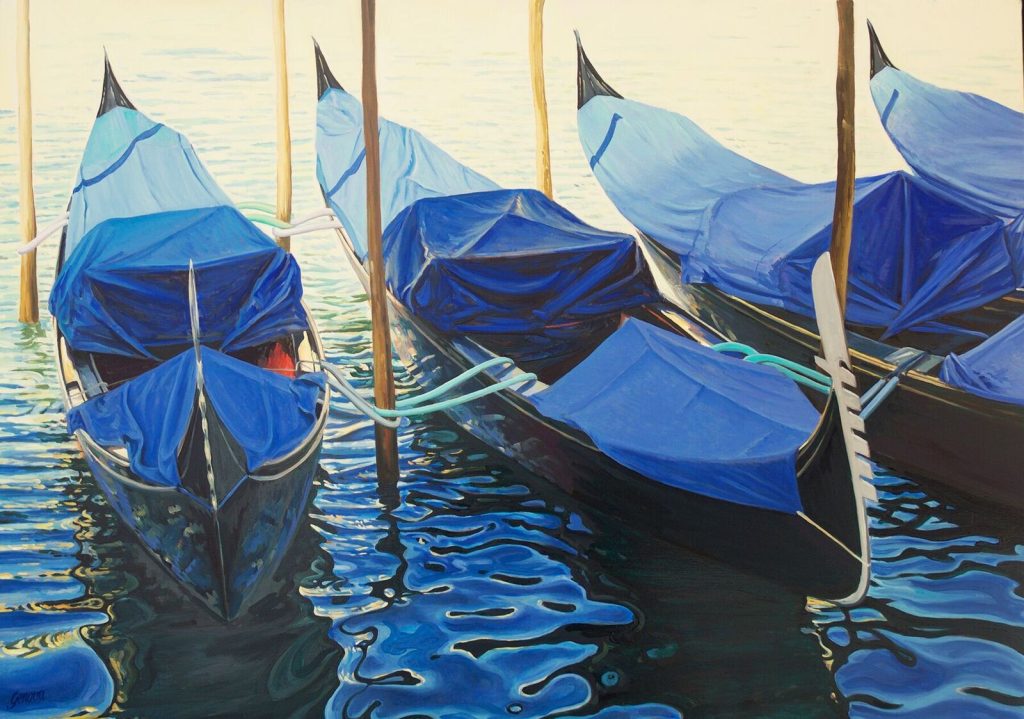
Gondolas at Rest, 27 x 38 inches, Oil on canvas
Discuss your botanical work.
What I love most about flowers is the delicate structure of the petals, their beautiful shapes, and the vast array of hues. I’m often amazed at how many colours it takes to capture the beauty of a white peony. The transparency of a flower’s petals is something to behold. So many colours reflect upon them, and they have such a delicate composition. The sensuality of a flower is what I try to capture.
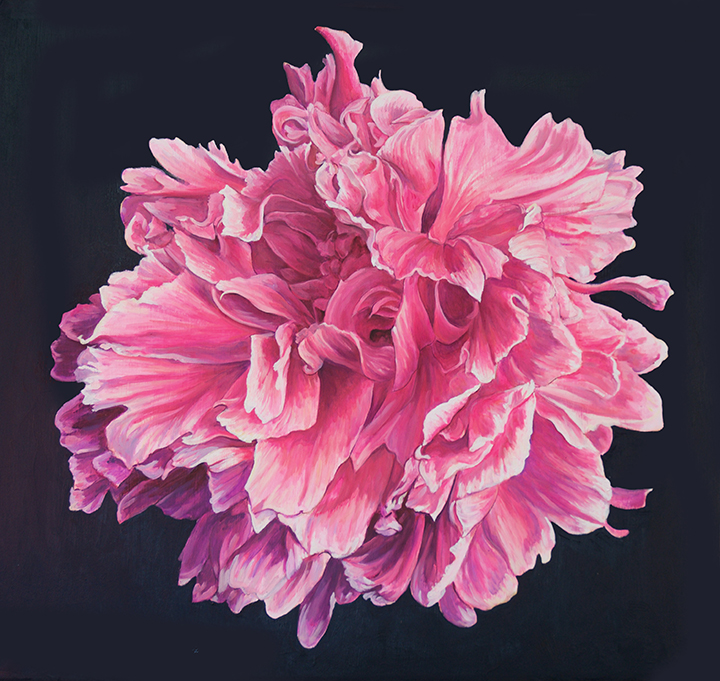
Peony from Michelle’s Garden, 28 x 36 inches, oil on canvas
Size: Most of my botanical work is large, a typical piece is 26 x 30 inches
Background: I use black in most of my botanicals to give it contrast
Use of composition: Composition is most important; I try to view a flower from an unusual angle.
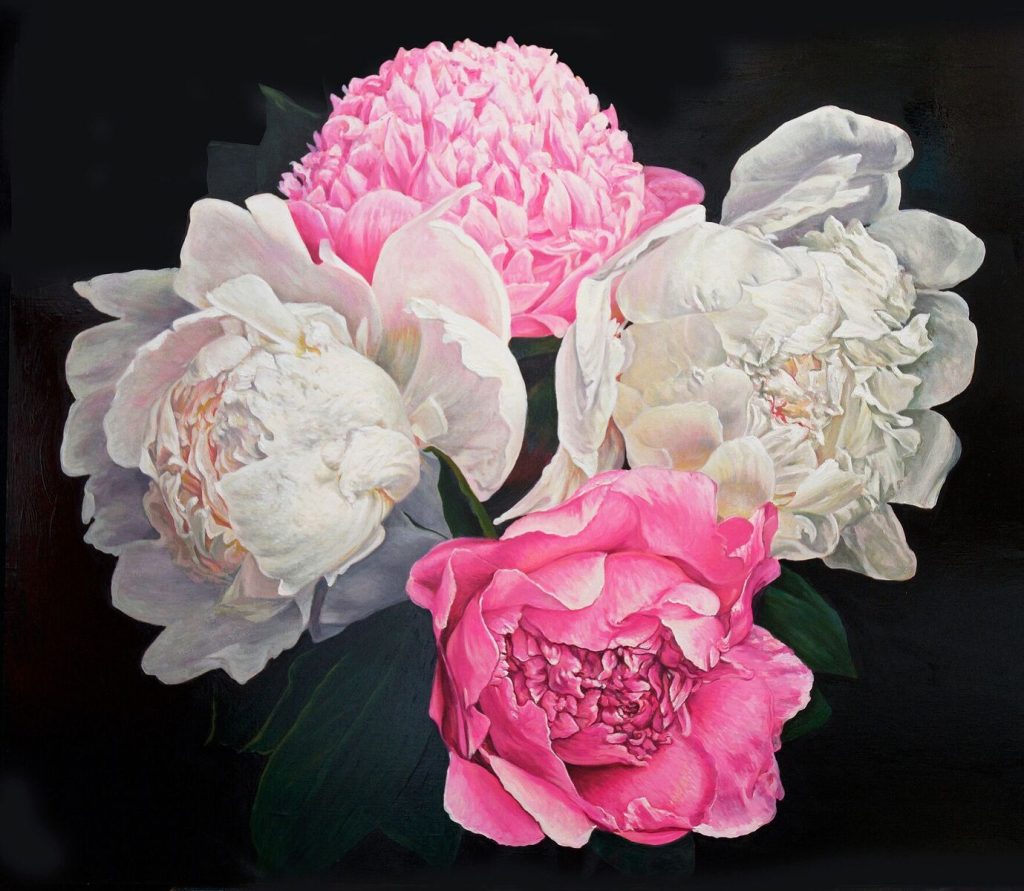
Peonies, 30 x 35 inches, Oil on canvas
Use of enlargement: I photograph most subjects and work from my computer
Discuss how lighting influences your architectural works.
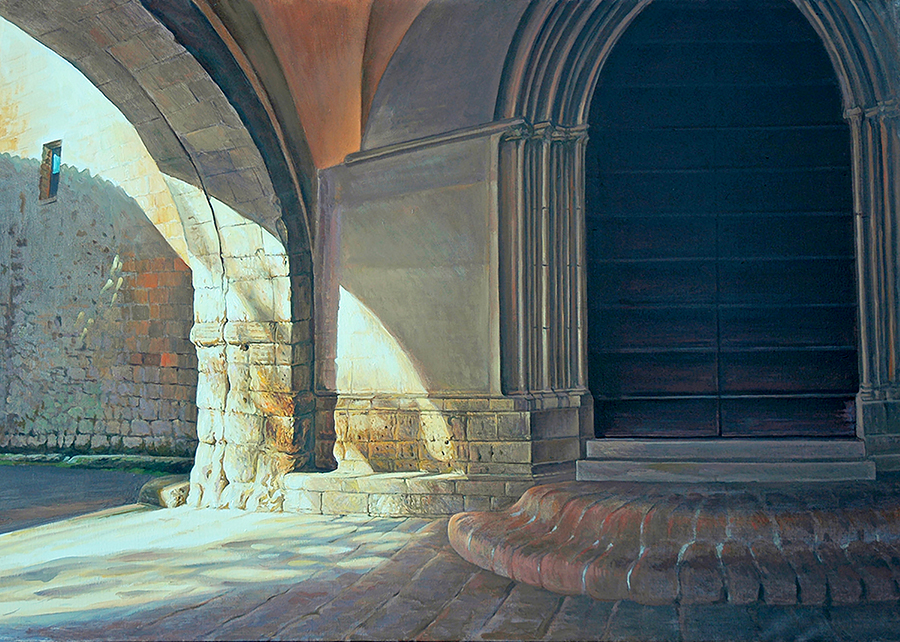
The Chapel at La Badia, 24 x 36 inches, Oil on canvas
In painting lighting is everything. When I travel to Europe to find architectural subjects, the early morning or late afternoon light is the light that gives the structures the dramatic light that I’m looking for. I never bother to look for subjects in the midday light because it is flat and boring.
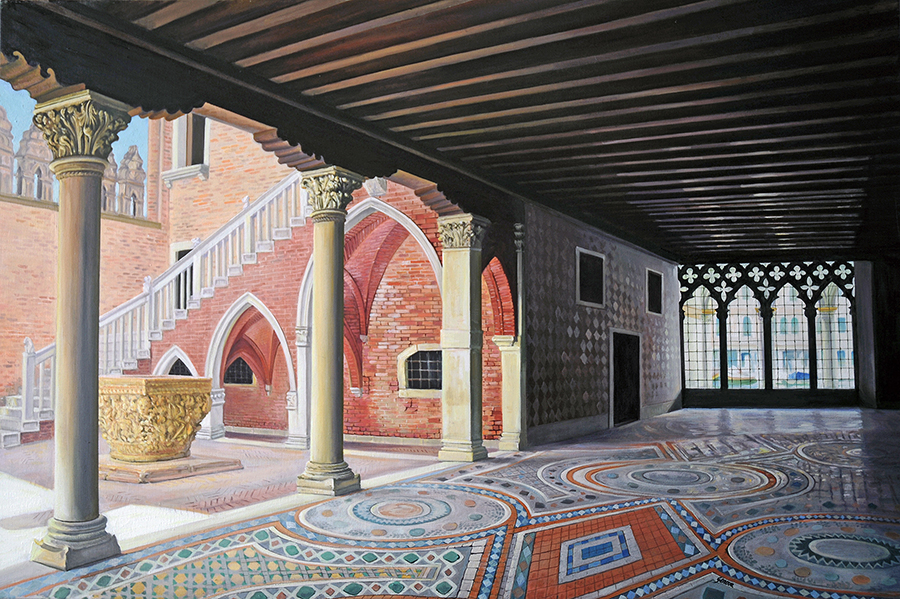
Ca d’Oro, 30 x 42 inches, Oil on canvas
Contact details:
Joseph Genova
http://josephgenovafineart.com
joe@josephgenovafineart.com
Joseph Genova, New York, USA
Interview by Deborah Blakeley, May, 2018
Think a colleague or friend could benefit from this interview?
Knowledge is one of the biggest assets in any business. So why not forward this on to your friends and colleagues so they too can start taking advantage of the insightful information the artist has given?
Other artists you may be interested in:


